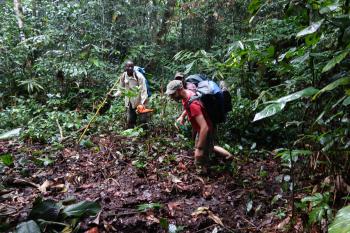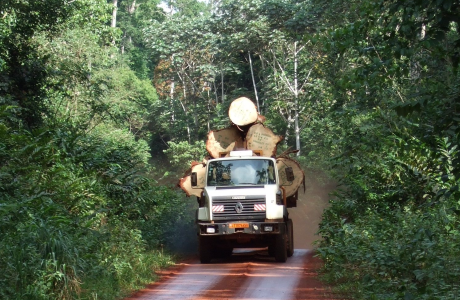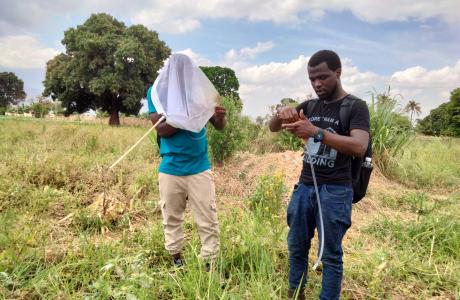The world's largest tropical peatland is in the Democratic Republic of Congo
For the first time, a new study has mapped the full scale of a vast region of peatland in the heart of the Congo Basin. These peatlands store huge amounts of carbon and their preservation is therefore essential in the battle to tackle global warming. However, a large proportion of the peatlands are under threat, particularly from oil exploitation.

Peat is a partially-decomposed plant matter. When trees, leaves and roots die, year-round waterlogging in the swamp prevents decomposition, slowly forming a layer of peat. The carbon accumulated during plant growth is captured in the peat, which acts as a carbon sink. If peatlands dry out, for example due to changes in land use, peat decomposition can resume, releasing the stored carbon into the atmosphere.
In a new study published in Nature Geoscience, an international team of researchers has identified vast peatlands in the central Congo Basin, covering 16.7 million hectares - more than five times the size of Belgium. In places, the peat is up to 6.5 metres deep.
Researchers reveal that these peatlands store between 26 and 32 billion tonnes of carbon – roughly the equivalent to three years’ worth of global fossil fuel emissions. The central Congo basin is home to 36% of the world’s tropical peatland area, and stores 28% of the world’s tropical peat carbon.
“Our findings really highlight the importance of the Congolese peatlands as a globally important store of carbon”, says Bart Crezee, a researcher from the University of Leeds and lead author of the study.
“As much carbon is stored in this peatland as is found in all the trees of the entire Congo Basin rainforest. The critical importance of keeping this carbon safely stored in tropical peatlands cannot be underestimated in the battle to tackle climate change.”
Only 8% of this peat carbon lies within nationally protected areas, suggesting vulnerability to future changes in land-use. In late July 2022, for example, one million hectares of these peatlands are being auctioned for oil development by the DRC government.
“The central Congo peat swamp forests are currently one of the most carbon-dense ecosystems on earth, storing an average of 1,712 tonnes of carbon per hectare in peat”, says Wannes Hubau, researcher at the Royal Museum for Central Africa who participated in the study.
“Due to their remote location, the peatlands in the Congo Basin so far have remained relatively undisturbed. Development on the peatlands could have a disastrous effect on managing global climate change.”
“When we overlaid the new peatland map with plans for changes in land use, we found that a quarter of the carbon stock is threatened by industrial logging, mining or palm oil development”, according to Wannes Hubau.
The study was led by the University of Leeds (UK) and the University of Kisangani (DRC), in collaboration with, among others, the Royal Museum for Central Africa.
Crezee, B., Dargie, G.C., Ewango, C.E.N. et al. Mapping peat thickness and carbon stocks of the central Congo Basin using field data. Nature Geoscience (2022). https://doi.org/10.1038/s41561-022-00966-7


